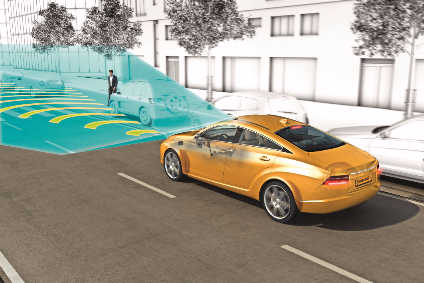
Continuing just-auto’s series of interviews with tier one suppliers, Matthew Beecham spoke to executives of Continental Automotive about next-generation sensors and market growth.
What applications will next-generation sensors and electronics enable?

Discover B2B Marketing That Performs
Combine business intelligence and editorial excellence to reach engaged professionals across 36 leading media platforms.
In technological terms, automated driving represents the logical next step in an evolutionary process. If advanced driver assistance systems are networked more profoundly with real-time data, traffic participants, driver information and drive systems, the ultimate result leads to highly and fully automated driving. As a system supplier, Continental is in an ideal position to develop solutions for partially automated applications, and put them into series production, for its customers as a first step.
By when?
We will see the first applications involving highly automated driving from 2020 onwards, and fully automated driving – i.e. higher speeds and more complex driving situations – as of 2025. When it comes to automated driving, an integrated set of advanced sensors and cameras will play a major role for next-generation applications and functions such as:
Traffic Jam Assistant
Traffic jams are physically strenuous, strain the driver’s nerves and carry an elevated risk of rear-end collisions. An application example for automated driving, in order to eliminate this risk. The driver can simply push a button to delegate the task to the vehicle. Braking, starting, and adherence to a safe following distance take place while the driver can keep his hands off the steering wheel.
Parking Companion
This feature lets any driver easily cope with any parking space. The vehicle automatically scans parking areas for a suitable space while passing by and then offers that space to the driver. If the driver accepts the suggestion, the vehicle takes care of the rest: steering, controlled acceleration and braking right up to the final parking position.
Remote Garage Parking
This feature makes parking the vehicle in the garage a lot easier. On the approach to the garage, the Surround View cameras detect pathway and garage. The driver gets out and delegates the maneuvering within private property and garage parking maneuver to the vehicle. The cameras detect the garage structure and the vehicle is automatically guided along the inside walls to a final halt. The vehicle is then left in a safe mode and final parking position.
Cruising Chauffeur:
Long drives on the highway become more relaxing. Once activated, the vehicle takes over from the driver and cruises along the highway adjusting its speed to traffic conditions and regulations. The vehicle stays safely in the lane. Information provided by our eHorizon and the Backend (in the Cloud) enhance the smoothness of the journey. The driver does not have to take over again until exiting the highway – which the vehicle announces ahead of time.
We hear of a need for sensors with better accuracy, capable of delivering more precise and earlier signals. Is this where you are seeing, i.e. smart / intelligent sensors?
Yes, we see more and more sensors with high accuracy, short response time and robustness over life time needed in the future for more stringed emission and CO2 legislation. Especially for real driving emission (RDE) the emissions and CO2 must reach the target under continuously changing environment and changing driving situations. All the precise sensors help to optimise the control strategies depending on real environment conditions, in order to always deliver the best CO2 and emissions without exceeding the emission legislation values under all conditions.
For example for precise air and EGR [Exhaust Gas Recirculation] control, mass air flow sensor with additional humidity, temperature and pressure measurement is needed, in order to estimate accurate air and EGR into the cylinder under changing environment conditions.
Another example is the accurate NOx aftertreatment control with SCR for diesel application. Here are the precise NOx-sensor, Urea Concentration and Level Sensor as well as exhaust high temperature sensor before and after catalyst important for the right dosing of urea depending on all changing conditions, in order to always keep NOx emission target without making NH3 breakthrough.
For reaching high accuracy over [an engine’s] life time, more and more smart sensors are needed. With [a] smart sensor, [it] can be calibrated during manufacturing at end of line. At the same time, the sensor tolerance can be adapted during useful life to keep its accuracy.
What are your estimates for the number of sensors on an average vehicle today and predictions for 2020?
Technological advancements in the automotive industry heavily depend on software. It is the new wheel of the industry. Digitalisation ultimately allows the automotive industry to increasingly develop innovations that promote megatrends. From a purely mechanical product, the car has now been transformed into a rolling computer. More than 170 sensors, around 90 electronic control units, and more than 150 actuators are installed in modern vehicles, which enable functions such as emergency brake assist. As such, the automotive industry is already fully in the grip of digitalisation.






